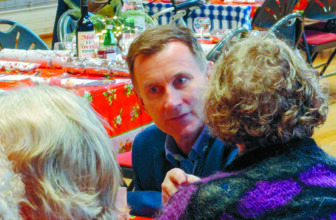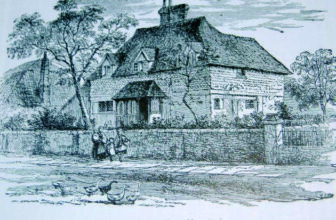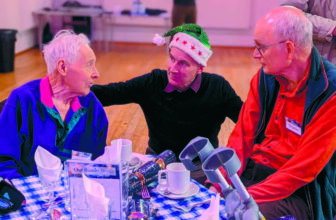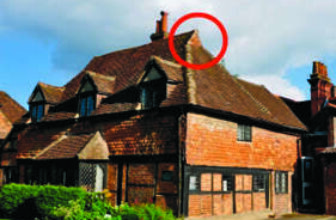
The registrars dealing with women available for farming met at Guildford. Cranleigh’s registrar was Mrs Welch, of ‘Stonewall’ on the Common. Although farmers were desperate for workers,
there was still a lot of prejudice against employing women. The registrars agreed it was most satisfactory when women worked in gangs under a leader, who took orders from the farmer and kept time sheets. The photo of women working at New Park Farm suggests that they were doing just that.
In early January, a party of convalescent men from Oaklands Red Cross Hospital gave a concert at the Village Hall ‘as a kind of “thank-you” to the people of Cranleigh’ for all the good things showered on them at Christmas. This included a series of tableaux, and a realistic display of the Highland Sword Dance by Private Harpur of the Argyll and Sutherland Highlanders. A song, ‘We are the Oaklands B’hoys’, caused much amusement.
The concert must have been a brief moment of happiness, as tragic news from the Front came constantly to local homes. Arthur Tickner and William Stenning were wounded and missing, and a
memorial service was held for Hayward Johnston, 39, of the Norfolk Regiment, second son of Mr and Mrs C.E. Johnston of New Park Farm, who had died in hospital in France. In fact Arthur Tickner, whose parents, Mr and Mrs William Tickner, lived in Mead Road, had been killed on 5 January at Beaumont Hamel.
The County Appeals Tribunal considered the appeal against conscription brought by Jabez Nightingale, 38, house furnisher of Cranleigh. He volunteered for agricultural employment during the day, so that he had the evenings to keep his business going. The case was dismissed, but Nightingale was told he could make another appeal. The business did keep going, until 1959, under Jabez and later his brother and nephew.
The Hambledon Rural District Council was having difficulty maintaining the local roads, as ten of its road employees had been called up. The Council had managed to retain one motor driver and an engine driver, but three of its steam rollers were idle for want of drivers. It was applying for German prisoners of war.
Cranleigh man Rennie Crick, who spent Christmas at the 11th Division’s Rest Centre at Léalvillers, west of Thiepval, was back in action in early 1917. He wrote in his diary that there was ‘a terrific bombardment’. ‘Eighty of us were ordered to be ready to go up the Line as stretcher-bearers at half-an-hour’s notice’. Later, he became a clerk receiving casualties. There were many wounded men, and he worked regularly to until 2 or 3 a.m, recording soldiers’ names and numbers, their injuries and what was done with them. When the 34th Field Ambulance was relieved by another FA, they were marched well back from the Front, this time to a place near Auxi-le-Chateau, almost at the coast. ‘My feet were terribly sore’, he wrote. They were accommodated in bell tents, which gave little protection in the snow. Nevertheless, when he arrived there on January 21st, there was ‘a big parcel from home’ magically awaiting him.
He was able to enjoy the luxury of having hot baths, and in a cross-country run, he got home eighth. Another excitement was seeing an aeroplane loop the loop. ‘It was exciting’, he wrote in his diary.
The Cranleigh History Society meets on the 2nd Thursday of each month at 8.00pm in the Band Room. The next meeting will be on Thursday January 12th, when Robin Stannards subject is ‘Henry Woodyer, local architect’.











